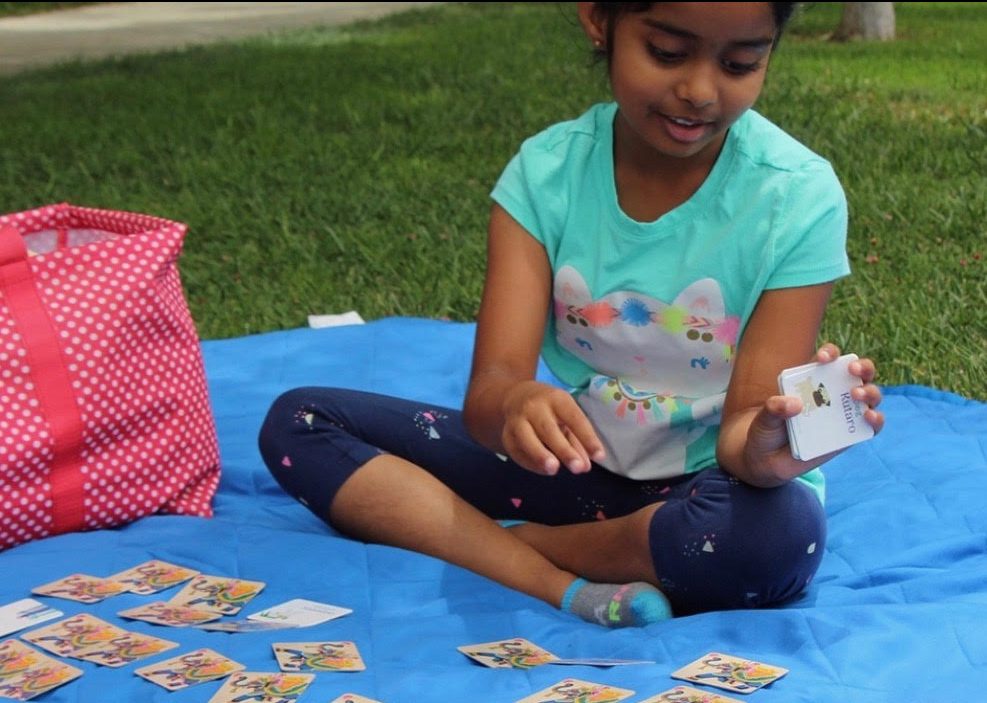
While I was raised in the United States since I was five, I grew up with spontaneous Gujarati immersion surrounded by lots of relatives. My son, however, can not understand much of Gujarati. I also have a seven-year-old daughter who just in the last few months has started becoming curious about what I’m saying during Facetime with her nani, my mom. She is eagerly trying to remember her recently learned words and incorporate them into daily conversation, leaving me feeling a bit guilty, and look for resources to teach Gujarati to children.
A few years ago, one particular mom felt she wanted teaching resources for her kids to learn Gujarati. Vaishali Patel, the founder of Sanskar Teaching, has fostered her desire to create Gujarati learning tools into an online and tactile-product company dedicated to this purpose. I recently tested the company’s Gujarati Memory Game on the best possible subjects: my kids!
The night we sat down to play, my kids were making the connection between the pictures, words, and meanings. I was sighing a little with relief! Included are essential, vocabulary-building words for basic body parts, transportation nouns, and animals. The kids stayed engaged and I had fun.
[Read More: The Loss of my Ancestral Tongue: Why I Regret Not Learning Punjabi]
With learning a new language come obvious challenges. I asked the Gujarati educator, Patel herself, what her experience-based input is on teaching children to speak their native language.
How do you suggest parents of children of different ages teach Gujarati to children?
For younger children under the age of three, I advise that they begin by introducing simple things like songs, simple greetings and phrases. Young children learn and remember best through songs and movement. Encourage the children to speak Gujarati as often as they can and make learning fun. For older children, parents can actually go a little deeper with stories, games, vocabulary and phrases.
What is your advice to parents trying to teach their kids their native language? Anything specific to Gujarati?
What has worked for me and my live class parents is repetition. Whatever you teach your child in a new language must be repeated so it can ‘marinate’ in them in order for them to retain the learning. I encourage parents to get the kids excited about cultural events and surround them with other children who are either learning or speaking the native language. In our house, we have a rule that when grandparents are around we all only speak Gujarati. Of course, we don’t always stick to it, but you have to try. Language, when combined with traditions, rituals and culture, holds much more value in my opinion. So if you want to teach Gujarati to children, they need to be surrounded by things that will remind them of the language to get the full immersion.
What do you think is the easiest part of learning Gujarati for children and the hardest?
The easiest parts are the basic greetings, names of objects and vocabulary, as you can simply memorize all of this. The hardest part is sentence structure. Mastery of this comes with time and practice. Practicing what you learn over and over again makes this part easier.
To learn more and to order the Gujarati Memory Game, visit Sanskar Teaching.
The photo in this post is provided by Sanskar Teaching.




